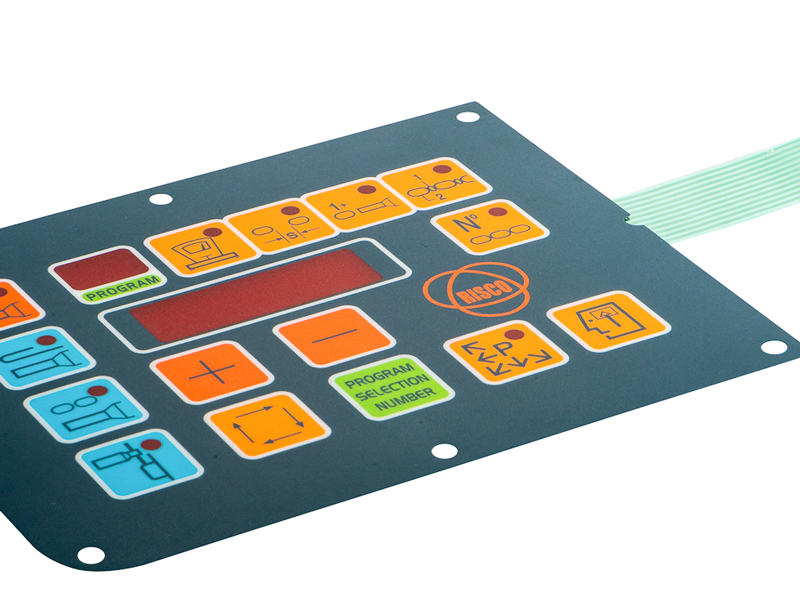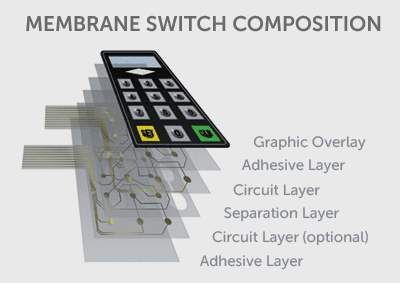The Impact of Membrane Switches on User Interface and Device Functionality
The Impact of Membrane Switches on User Interface and Device Functionality
Blog Article
The Advantages of Using Membrane Layer Switches Over in Customer Electronic Devices
Membrane layer buttons are significantly recognized for their considerable benefits in customer electronics, particularly in enhancing user interaction and improving production procedures. Their capability to give intuitive user interfaces and tactile feedback can significantly decrease user mistakes, while their light-weight building and construction and streamlined production steps add to cost-effectiveness and quicker market access. Additionally, the convenience in design enables tailored services that meet diverse customer needs. The implications of these advantages expand past plain performance, hinting at a transformative potential for the future of electronic devices. What additional benefits might emerge as this technology advances?
Boosted User Experience
In today's affordable landscape of customer electronic devices, enhanced user experience is critical; virtually 85% of individuals prioritize user-friendly user interfaces. Membrane switches over play a critical duty in achieving this level of usability. Their level, inconspicuous style permits for seamless combination into various gadgets, decreasing bulk while maintaining functionality. This layout aesthetic not just improves the visual allure however additionally contributes to an extra streamlined customer interaction.
The responsive comments given by membrane buttons is important for assisting customer actions, ensuring that commands are signed up precisely. This responses system enhances and decreases mistakes customer satisfaction, fostering a positive partnership between the gadget and the customer. The customizable nature of membrane switches allows makers to tailor user interfaces to specific user requirements, making devices extra easily accessible and inviting.
Additionally, membrane switches can include backlighting and visuals overlays, additionally improving presence and use in varied environments. This flexibility makes certain that devices remain practical and user-friendly, no matter the setup. In general, the assimilation of membrane layer changes right into consumer electronic devices considerably improves customer experience, driving brand commitment and satisfaction in a progressively competitive market.
Economical Production
Consumer electronic devices suppliers are constantly looking for means to balance top quality with price, and membrane switches use a compelling solution for cost-efficient production. membrane switch. These parts are naturally easier than traditional mechanical buttons, which lowers both production costs and complexity. The light-weight design of membrane switches enables for reduced delivery expenditures and easier combination into compact devices, further enhancing their appeal in an open market

Makers can produce membrane layer buttons in high volumes, benefiting from economic situations of scale. This mass production capacity makes sure constant high quality while dramatically decreasing per-unit costs. Additionally, the products used in membrane layer switches, such as polyester and polycarbonate, are usually less costly than those needed for standard button technologies, adding to general price financial savings.
The production process for membrane switches commonly requires less actions and much less labor compared to various other button kinds. This streamlined technique not just minimizes labor expenses but likewise speeds up time-to-market, enabling business to react quickly to customer need. The mix of reduced product expenses and effective manufacturing procedures settings membrane switches over as a clever investment for producers intending to provide high-quality customer electronic devices at competitive price points.
Layout Versatility and Modification
While standard mechanical buttons typically impose restrictions on style as a result of their bulk and needed placing systems, membrane layer buttons offer unrivaled flexibility and customization options for customer electronic devices. This innovative innovation permits designers to develop smooth, inconspicuous user interfaces that can perfectly incorporate into different item aesthetics, from smart devices to kitchen area devices.
Membrane layer buttons can be created in virtually any shape or dimension, allowing makers to customize the format to particular ergonomic and practical requirements. This flexibility not just boosts user experience but also enables artistic layouts that line up with brand identity. The usage of printed graphics on membrane changes offers the opportunity for vivid colors and complex styles, which can be easily customized without substantial cost effects.
Furthermore, membrane layer buttons can integrate multiple capabilities into a solitary layer, reducing the demand for multiple parts and streamlining setting up procedures. This streamlined design approach decreases space and weight, making it excellent for small consumer electronics. Generally, the design versatility and modification capacities of membrane layer changes empower manufacturers browse this site to introduce, inevitably leading to even more engaging and user-friendly items.
Toughness and Dependability
As technology remains to evolve, the resilience and reliability of membrane switches have actually become essential considerations for suppliers in the consumer electronics market. Membrane layer buttons are developed to withstand extreme environmental problems, consisting of temperature level variations, wetness, and dust exposure. Their durable building and construction often entails multi-layered materials that give an efficient barrier versus impurities, ensuring longevity and regular performance.
Along with environmental resistance, membrane switches over deal superior mechanical reliability. Unlike standard mechanical switches, which might wear in time, membrane changes use a covered layout that minimizes the risk of mechanical failure. The lack of moving components not only improves their life-span however also decreases wear and tear, making them perfect for high-usage applications.
Moreover, membrane buttons can withstand a substantial variety of actuations without loss of capability, typically going beyond millions of cycles (membrane switch). This longevity translates to decrease replacement costs and decreased downtime for makers and consumers alike. Generally, the mix of environmental durability and mechanical integrity makes membrane layer switches over a critical choice for customer electronic devices, ensuring that gadgets continue to be effective and operational throughout their desired life expectancy

Streamlined Item Growth
The resilience and reliability of membrane layer switches considerably contribute to structured product advancement in the consumer electronic devices industry. By incorporating these switches early in the style process, makers can reduce the intricacy and number of components needed in their items. Membrane buttons are lightweight and portable, enabling for a lot more effective room application within devices, which can cause streamlined setting up processes.

The simplicity of making membrane layer switches likewise plays an essential function in product growth. With reference modern printing strategies and products, manufacturing can be scaled efficiently, lessening preparations and reducing waste. This causes reduced manufacturing expenses, enhancing overall productivity.

Final Thought
In conclusion, membrane switches dramatically improve consumer electronics by giving an enhanced user experience, cost-efficient production procedures, and versatile style alternatives. The combination of membrane layer switches over stands for a calculated option for manufacturers looking for to optimize item layout and performance.
Membrane layer buttons are significantly identified for their significant benefits in customer electronic devices, especially in enhancing individual interaction and enhancing manufacturing processes. In addition, the products utilized in membrane layer switches, such as polyester and polycarbonate, are often less pricey than those needed for standard switch innovations, contributing to total YOURURL.com cost financial savings.
The manufacturing procedure for membrane layer switches normally needs less actions and much less labor compared to various other switch types. Unlike conventional mechanical buttons, which may wear out over time, membrane changes make use of a covered layout that lessens the risk of mechanical failing.In final thought, membrane layer changes significantly boost consumer electronics by giving an enhanced user experience, economical production processes, and versatile layout choices.
Report this page